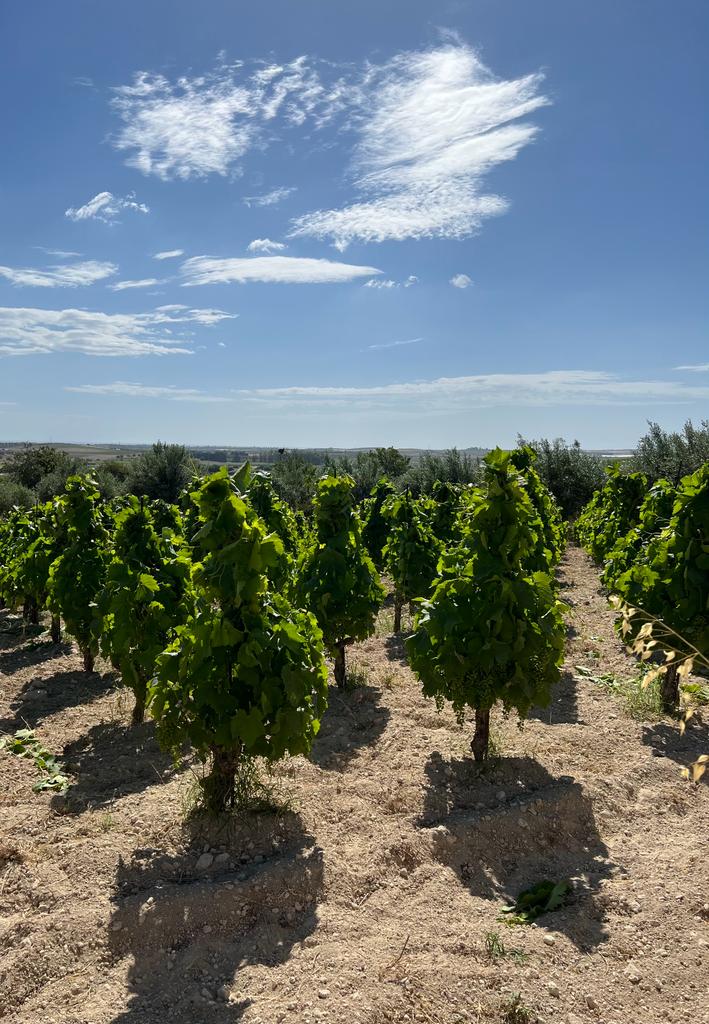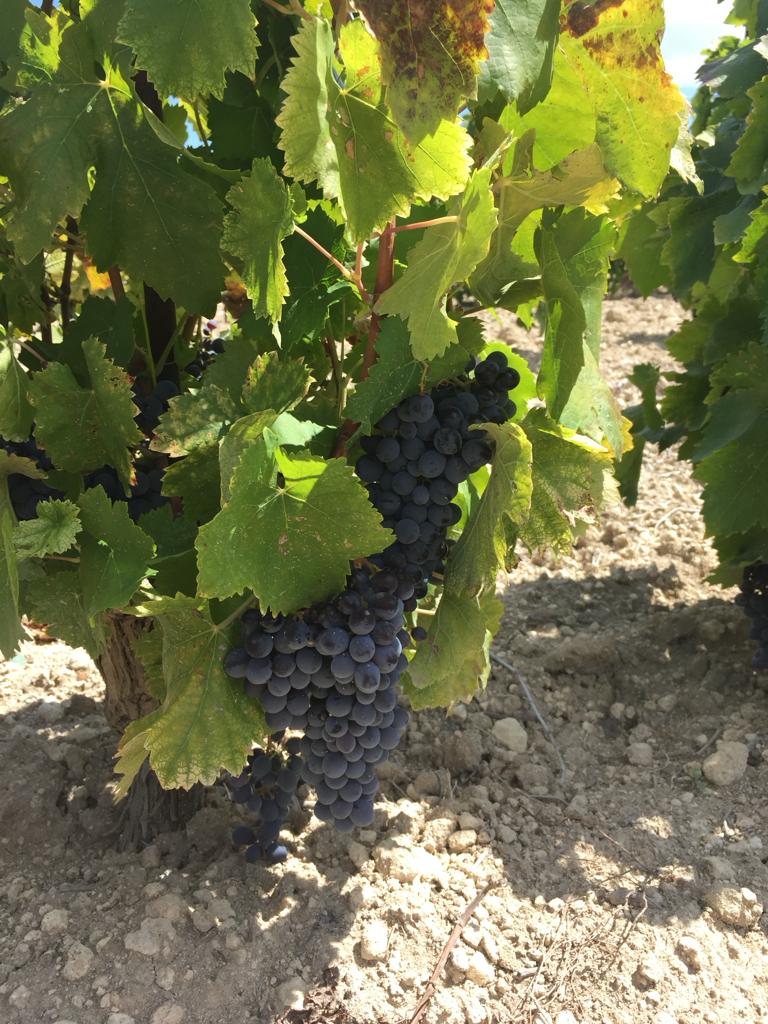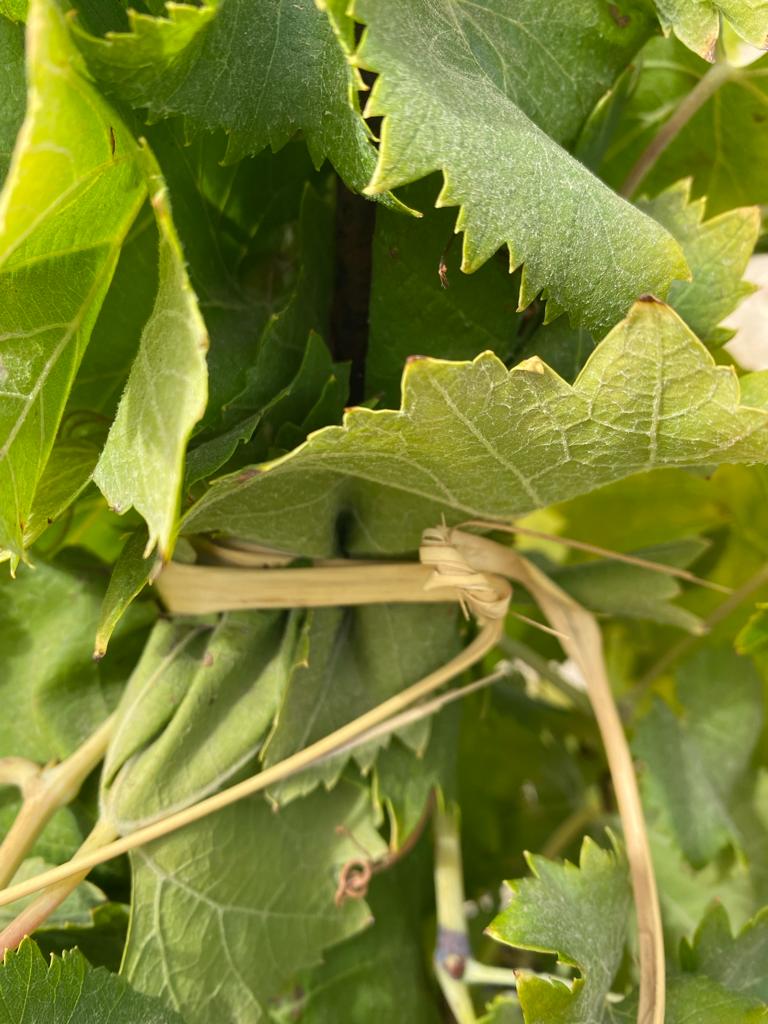Dear friend,
Here in Marabino, winter took longer than usual. A hot and arid autumn anticipated rains and colder temperatures that only arrived in January, which was rather unusual for the area.
Before starting pruning we uprooted an old “nero d’Avola” vineyard, the “Conca”, due to the problems arising from the 2022 harvest caused by the leafhopper. Do you remember? We talked about it in the newsletter that autumn. In this plot, before making a new vineyard, we will plant wheat for two years in order to speed up the soil recovery process. We recovered the poles, it was a spurred cordon trained vineyard, to use them along the borders of Marabino, and on them we proceeded to plant new hedges of mastic, oleander, carob, laurel and strawberry tree to increase the biodiversity within our estate. When the time comes, however, we will plant as a sapling, and today I would like to talk to you about this typical breeding technique, which is so peculiar and which I am particularly fond of.

Sapling cultivation is widespread almost everywhere in the Mediterranean area, here in Europe all over Italy, France, Germany, Greece, Spain, etc.: in general where the climatic conditions, from dry hot to cold, limit the development of the plant. The sapling vine log can be below the ground level, as in Pantelleria, or more or less high, as in the Vittoria area and on Etna. There the plant is kept higher so as not to expose the bunches to the soil humidity, in our territory it is kept lower so that they can touch it: we are in an arid and hot area, and the air resides right at the bottom cooler as it is heavier. The trunks are always supported by poles (we use iron ones, as well as having a lower cost than chestnut ones, they guarantee greater stability over time).
In our territory, vines were traditionally planted every 90 centimeters: it was thought to optimize production by increasing the vines per hectare, but this, in addition to involving more work, instead of increasing, lowered the average yield per vine, while at the same time giving greater quality to the grapes. It was an ideal layout to pass by mule. Subsequently, with the advent of motor hoes, the section widened to 1,25 meters by 1,25 meters (like that of our “Archimede” vineyard, although every now and then we found old mule shoes in this vineyard too). Today, in order to better manage the vineyard with more precise soil processing, we have adopted a wider layout so that we can access the rows with the tractor (2,30 meters by 0.90 metres).
Before it goes into production, the sapling needs at least two/three years from grafting (in the field, with mass selection). Only at the end of the third year does the actual production pruning begin: if the vigor of the plant allows it, the three desired branches can be created at the same height. This shape with three branches (shoulders) is called vase. In our territory the saplings are grown with three very short pruned branches, with two buds, for a total of six shoots per year, keeping the production of the grapes very modest if compared to a long pruning (8/12 buds) like the one done for the guyot. This choice facilitates the longevity of the vine, which is thus not overloaded in terms of production and is able to concentrate energy on fewer bunches (as well as being able to better manage the stress resulting from the extreme heat of our summers).
Despite the wider layout and therefore a more mechanizable approach, the tillage of the soil in the sapling vineyard must still be finished by hand with the use of the hoe, to better “scausare” (remove) the vine under the stump.

Unlike espalier training, each log as a sapling has its own freedom of growth which always makes it different from vine to vine. Over time, each plant acquires its own unique and irreplicable shape, which is much less noticeable in an espalier-trained plant. This is one of the many reasons that makes the sapling vineyard more original and fascinating.
During the vegetative phase the shoots are tied to a stake, we use rush leaves collected during the full moon. Leaves that are rich in water, which are dried in the sun and which are subsequently rehydrated in order to achieve the right elasticity. That’s when they’re ready to tie our vines. At the end of their use, when we prune our vineyards in winter, these leaves return to the soil without polluting and bringing organic matter to the soil.
If a leaf wall is formed in the espalier, in the sapling vineyard each vine has 360 degree leaf radiation which exposes it better to the sun’s rays and winds. The foliage, tied, continues its apical development but after fruit setting the so-called “mazzunatura” takes place: this is a typical sapling training system called “alberello pachinese impupato”, which consists in taking the apical bundle of the shoots, therefore the most tender part, and wrapping it around the brace trying to strangle the lymphatic flow of the shoot. This has the effect of topping without however causing cuts to the vine which, deceived by this technique, does not produce females and concentrates its energy on its fruit.

After the “mazzunatura”, no further processing is carried out other than some treatment, if necessary. The sapling should not be removed or trimmed, its typical vase shape envelops the fruits like an embrace, covering them with leaves and barely exposing them to the sun. In this way we avoid burns that would burn and dry the grapes given the temperatures, often prohibitive, that we reach here.
The tree is harvested exclusively by hand, it cannot be harvested by machine. If the grapes a few centimeters from the ground imply a more laborious and more careful harvest, this repays with magnificent fruit.
Over the years we have noticed how this cultivation, unlike espalier cultivation, has higher costs but the vines, exposed to increasingly warmer temperatures, respond better and maintain more constant maturation during the harvests. In “Moscato” we then noticed that the vines grown as espaliers are subject to pecking by birds, while those in saplings are not, since the bird fears the ground, where the bunches are found: it is afraid of predators. At the same time, the grapes on the saplings are more subject to the hunger of the foxes that sometimes roam the area, but this is the price of a healthy biodiversity!
See you soon,
Pierpaolo Messina
